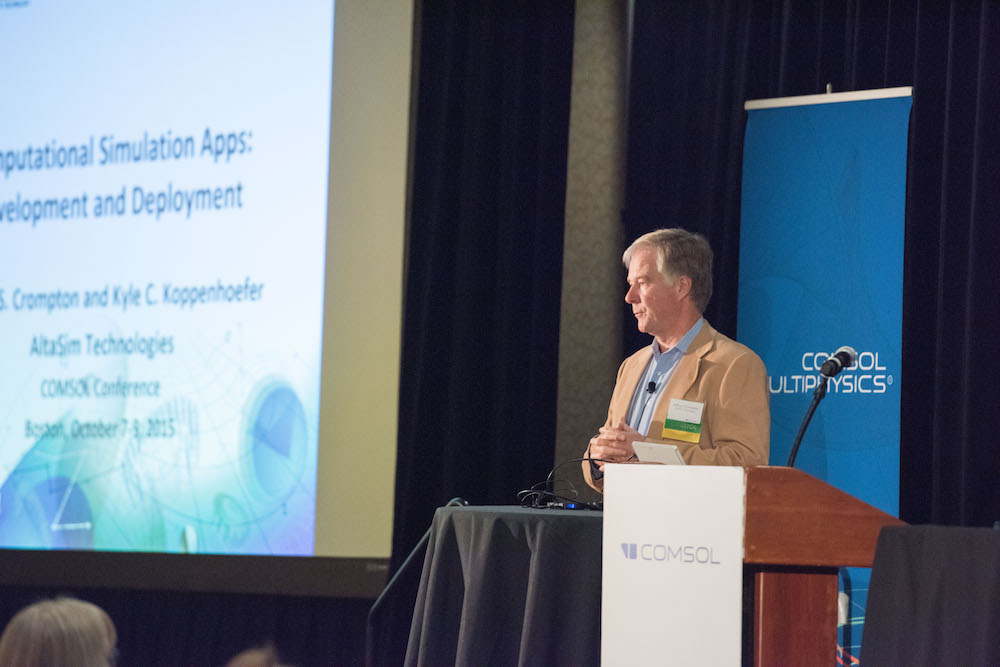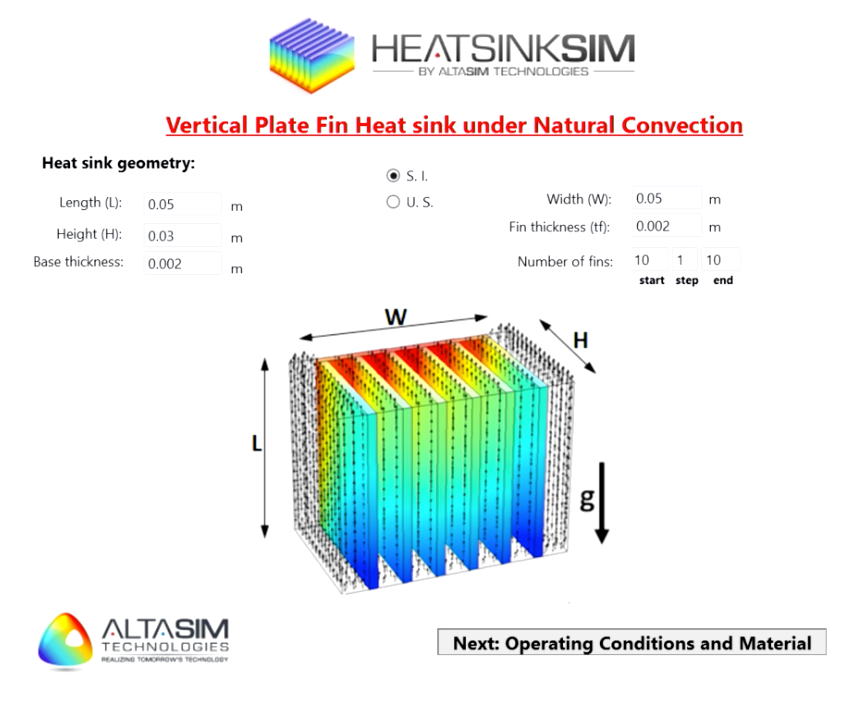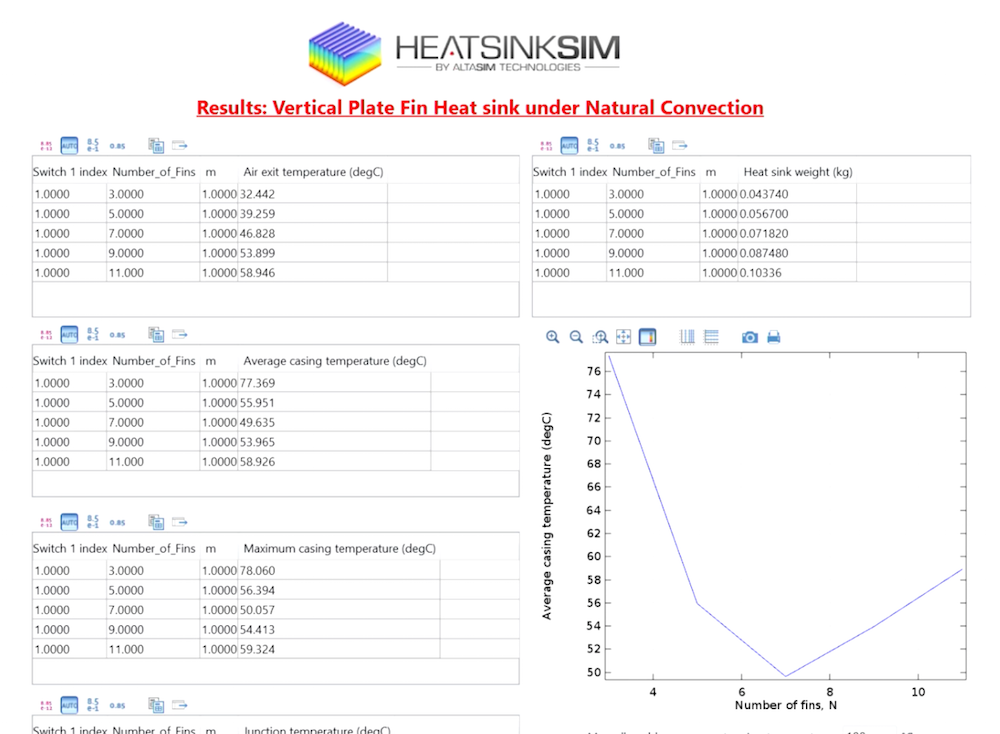
At the COMSOL Conference 2015 Boston, Jeff Crompton from AltaSim Technologies — a COMSOL Certified Consultant — spoke about building, sharing, and deploying apps and what this means for the future of simulation. The team at AltaSim develops apps for a variety of purposes, from analyzing power electronics to additive manufacturing technologies. While some apps are deployed for commercial use, others are customized to meet the specific needs of companies. See how AltaSim is making simulation more accessible with apps.
A Shift from Physical Prototyping to Computational Analysis
A key theme in Crompton’s keynote speech at the COMSOL Conference was the evolution of product development cycles. In the early years of product development, physical prototyping was exclusively led by large companies, as it was rather time consuming and expensive. For instance, when building an automobile, companies had to perform a crash test at nearly every step of the process. This was both costly and draining on time and resources.
In the 1980s, research and development teams started to use computational analysis. Creating virtual prototypes through simulation required less time and money, and physical prototypes were no longer required at every stage of the design process. Going back to the crash test example, researchers could simulate a crash and its effect on the car in order to determine the best, and safest, design possible before building the first physical prototype.
The improvements in simulation have led to more complex technology, a rapid turnover of products, and a larger user base. The need to build a physical prototype for a product is limited, if not altogether eliminated. Simulation apps offer many more advancements to product development in both large and small companies, including increased revenue and quality as well as on-time launch dates.
As Crompton notes, the limited number of simulation experts, as compared to the multitude of application areas in existence, creates a gap that simulation apps are able to fill. Making apps places the power of simulation in the hands of more product development engineers, who can utilize these tools regardless of their simulation expertise. Greater simulation accessibility for a wider audience will naturally lead to more innovation.

Jeff Crompton speaks about simulation apps at the COMSOL Conference 2015 Boston.
One way that AltaSim is investing in the future of simulation is by building and deploying their own simulation apps.
Apps Streamline a Heavy Product Development Workload
AltaSim first started using the Application Builder to create simulation apps after finding that they improved their regular computational analysis workflow in many respects. Compared to the needs of their development engineers, there was a shortage of access to simulation experts and time. Simulation results were needed to complete designs, but this required waiting for the experts to provide such information, thus stalling the product development cycle.
The simulation engineers at AltaSim quickly caught on to the simple process of building apps. They started out by taking the underlying .mph files from simulations that they had built in COMSOL Multiphysics® software and transforming them into simulation apps. Over time, the engineers began to experiment with adding Java® code, increasing the flexibility and functionality of apps designed to meet multiple needs and requirements.
One of AltaSim’s Apps: A Heat Sink for Power Electronic Designs
According to Crompton, the engineers responsible for designing electronic circuits for power electronics don’t normally consider the thermal aspects of the design until its final iterations, which can be problematic. The thermal constraints of these electronics, if not considered, render the design invalid. By using a simulation app to study their heat sink, those engineers can identify the constraints early in the process, advancing more quickly to the next stage of the development cycle.
AltaSim’s heat sink app was designed to represent a heat sink component used in microelectronic circuits. The circuits, which are used in a range of applications, feature high operating temperatures and must dissipate heat to extend their long-term operation. And they have to operate 24 hours a day, seven days a week, and 365 days a year. If the circuits overheat and malfunction, it can be expensive to constantly replace them.
The microelectronic circuits need a passive mode for heat dissipation, which can be achieved with a heat sink through natural convection. The heat sink app, built with the Application Builder in COMSOL Multiphysics, is used to optimize the design of the heat sink with the thermal constraints of the circuit in mind. An intuitive interface makes it easy for users to navigate through the app and make modifications. Compatibility with use on cluster computing platforms is also available, thus making the complex calculations solvable within acceptable time limits.

The simplified user interface (UI) for AltaSim’s heat sink app.
In the app’s UI, the user defines the geometry, applied power, materials, and the environmental conditions. Automatic meshing, physics setup, and solver selection are also offered. Within the app, there are two levels of analysis. For the Level 1 analysis, the app runs a parametric geometry sweep to study the heat sink’s design. An optional Level 2 study performs a full heat transfer analysis and compares the results with the circuit’s maximum operating limits. The functionality within the app automatically generates a report with the results.

The results page for the heat sink app.
Deploying Simulation Apps for a Wide Range of Uses
AltaSim has made a practice of developing and deploying apps to increase simulation accessibility for a variety of commercial uses. Apps for deployment, as Crompton pointed out, can be divided into two categories: proprietary and general.
Proprietary apps are created for companies or organizations with highly specific needs and processes. As such, the app must be fully customized and integrated within a certain information structure.
General apps, on the other hand, are applicable across a broad range of industries and application areas. In this case, an app can be purchased as a standalone app or a pay-per-use structure can be implemented. AltaSim puts significant time and effort into building general apps to ensure that they:
- Have a proper structure
- Use validated data
- Are tested by customers for usefulness
The heat sink app we referenced above is an example of a general app developed by AltaSim. It is used by a wide spectrum of companies for the development of many different products that must consider thermal effects.
AltaSim is currently building some new apps for commercial use. One such app pertains to metal processing and will study the heat treatment of metals. Other apps in development will focus on additive manufacturing (3D printing) and electromagnetics analysis. Crompton also envisions creating a series of apps that can be integrated into one common location and deployed globally. This will help make the benefits of simulation more accessible for engineers at every level of the design process.
Full Speed Ahead Toward the Future of Simulation
Today’s simulation capabilities are producing advanced and innovative products. And, with simulation apps, products will only become more cutting-edge over time. For large companies, Crompton states, apps offer a unified approach to product development. They also enable companies to capture the knowledge of experts and make it accessible to more design and process engineers. For small- and medium-sized companies, there is now a lower barrier for market entry. Leveling the playing field for these companies means that there are more innovative products that could not have been created without this kind of simulation accessibility.
With simulation apps, simulation can — and should be — for everyone. And there is one important thing to remember here, as Crompton notes: “It’s not just what we do with simulation, but why we do it.”
Further Reading
- Learn how other organizations are benefiting from building simulation apps:
- Interested in exploring additional potential use cases for apps? Check out this blog post: 7 Ways to Use the Application Builder and COMSOL Server™
- Read more about Jeff Crompton’s presentation and other industry talks from the COMSOL Conference 2015 Boston
Oracle and Java are registered trademarks of Oracle and/or its affiliates.



Comments (0)